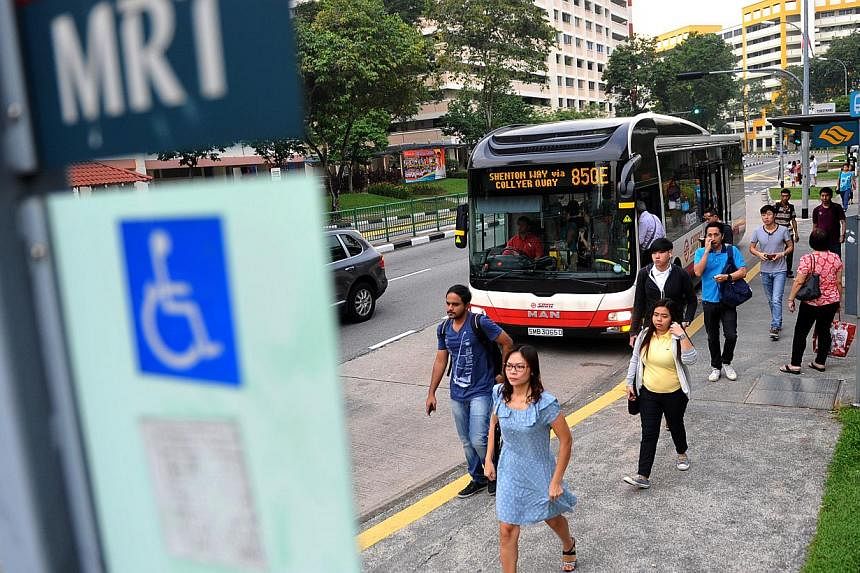Bus services rolled out under a billion-dollar scheme to ease train congestion have proven to be a hit.
Ridership for 11 such routes from outlying towns to the city, called "parallel" bus services by the Land Transport Authority (LTA), has grown since their respective debuts, in some cases by more than double.
For instance, the average daily ridership for Yishun service 850E grew from 199 in February last year to 489 in March this year, LTA figures show. Similarly, the number of daily rides on Woodlands route 951E rose from 221 last June to 509 in March.
"The demand for parallel bus services has been encouraging," said LTA group director for public transport Yeo Teck Guan.
Commuters and MPs say the new routes are popular for reasons including convenience, shorter travelling time and greater comfort compared with the MRT.
The new services comprise four routes by operators SBS Transit and SMRT as well as seven privately-run City Direct services.
Each route usually starts out with two morning trips and two evening ones but more are added if needed. For instance, four morning trips have been added to the Yishun 850E route, and three to the Woodlands 951E one. The LTA will work with the bus operators to increase service frequency if needed, said Mr Yeo.
Nee Soon GRC MP Lim Wee Kiak said demand has been strong from Sembawang residents for service 656, which takes them to Shenton Way.
The buses were filled from day one. And three runs of the service in the morning still cannot meet demand, said Dr Lim, who has asked LTA to add a fourth trip.
These new routes were put on the roads as part of the $1.1 billion Bus Service Enhancement Programme. With trains getting more crowded in recent years, these bus services have been called into action to serve commuters who would otherwise take a feeder bus and transfer to the MRT.
More are on the cards: Three more City Direct routes to serve Hougang, Bedok and Eunos will be added in the third quarter of this year.
Dr Park Byung Joon, an urban transport management expert at UniSIM, said ridership will improve over time as more people become aware of the bus services.
But while it is always good for commuters to have more options, parallel buses should remain a supplementary means of public transportation, he said.
"Buses cannot match trains in terms of passenger capacity and reliability," Dr Park said. "When all MRT networks are built, trains should be the backbone of public transport."
The buses are a boon for commuters such as claims manager Nancy Tay, 58, who takes City Direct service 652 from Ang Mo Kio to the Central Business District for work. She does not always get a seat, but the journey takes only 30 minutes, compared with about an hour if she takes service 55 to Bishan and switches to the MRT.
"This bus goes direct to my office and it saves time. The MRT is always very packed," she said.


